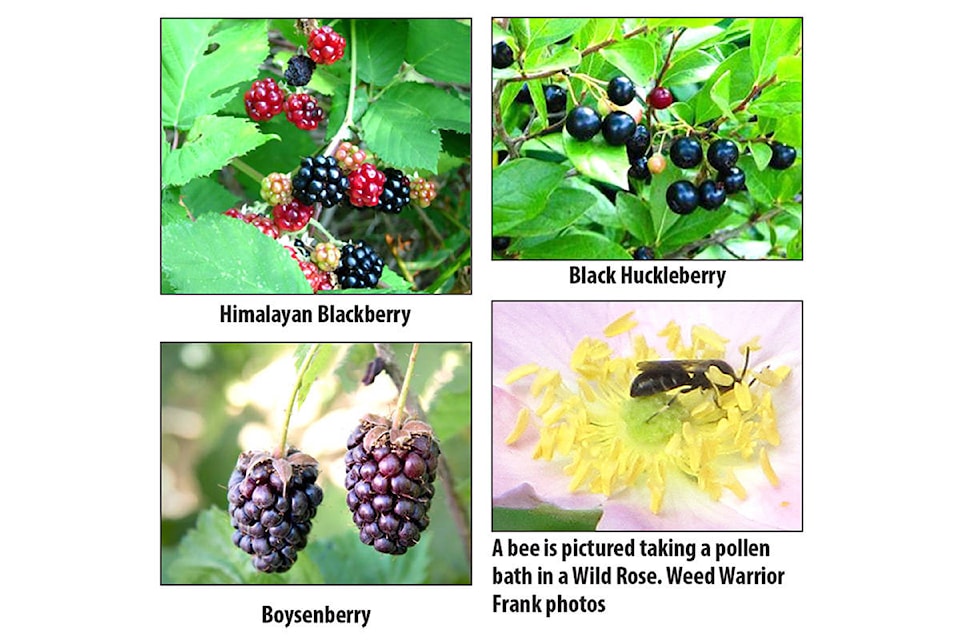This week, I am returning to the Invasive species Council of BC’s (ISCBC) Grow-Me-Instead booklet to continue writing about invasive plants that are of provincial concern, and the native and other non-invasive plants that we should put in our gardens instead.
My final article of 2019 was on an invasive ornamental —Himalayan Balsam, aka Policeman’s Helmet, because it’s flower shape resembles an English Bobby’s helmet.
So, next on the unwanted list is Himalayan Blackberry, which produces tasty berries on its tall thorny stems.
However, this invasive Blackberry bush forms dense thickets that can take over pastures and destabilize stream banks when it is allowed to spread.
ISCBC says Himalayan Blackberry has become a problem invader in southwest B.C., where it crowds out shorter native plants.
In our region, we were warned not to plant this invasive Blackberry in a 2012 article, and that advice still stands.
I do like the taste of these berries, but have decided to enjoy picking and eating them when visiting friends and relatives at the coast, where communities have let Himalayan Blackberry spread unchecked.
Instead, the East Kootenay Invasive Species Council recommends we choose from three natives: Nootka Rose, Thimbleberry and Black Huckleberry, or a non-invasive European, Red Raspberry, or a hybrid named Boysenberry.
READ MORE: An invasive weed, new to the East Kootenay
BCISC says Nootka Rose, aka wild Rose, is a hedgerow bush with large pink, showy flowers and small edible fruit used in tea or herbal medicine. It lines the ditch along my street, providing pollen baths for bumblebees and protection for ground nesting birds.
Thimbleberry grows well in Climate Zone 3, along RDEK forest trails. Its edible fruit provides a sweet snack for passers-by. Ediblewildfood.com says Thimbleberry is a great source of vitamins A and C and helps boost our immune system.
Black Huckleberry, our local forest treat, is, according to the Sierra Club BC, a major source of nutrition for grizzlies and black bears. The website estimates a bear can eat up to 180,000 huckleberries in a day. First Nations use Huckleberries in traditional foods like pemmican, and cook these berries with salmon roe.
Occasionally, my hunter/gatherer friends and neighbours are willing to share their pies and jams (hint hint).
Red Raspberry grows well up here in the Gold Creek subdivision, and in town. Foodandwine.com says the hybrid Boysenberry is named after its California creator, and that New Zealand exports more of this fruit than any other producer.
ISCBC says under its aka, Marionberry, it is the world favourite for commercial blackberry pies.
Weed Warrior Frank
